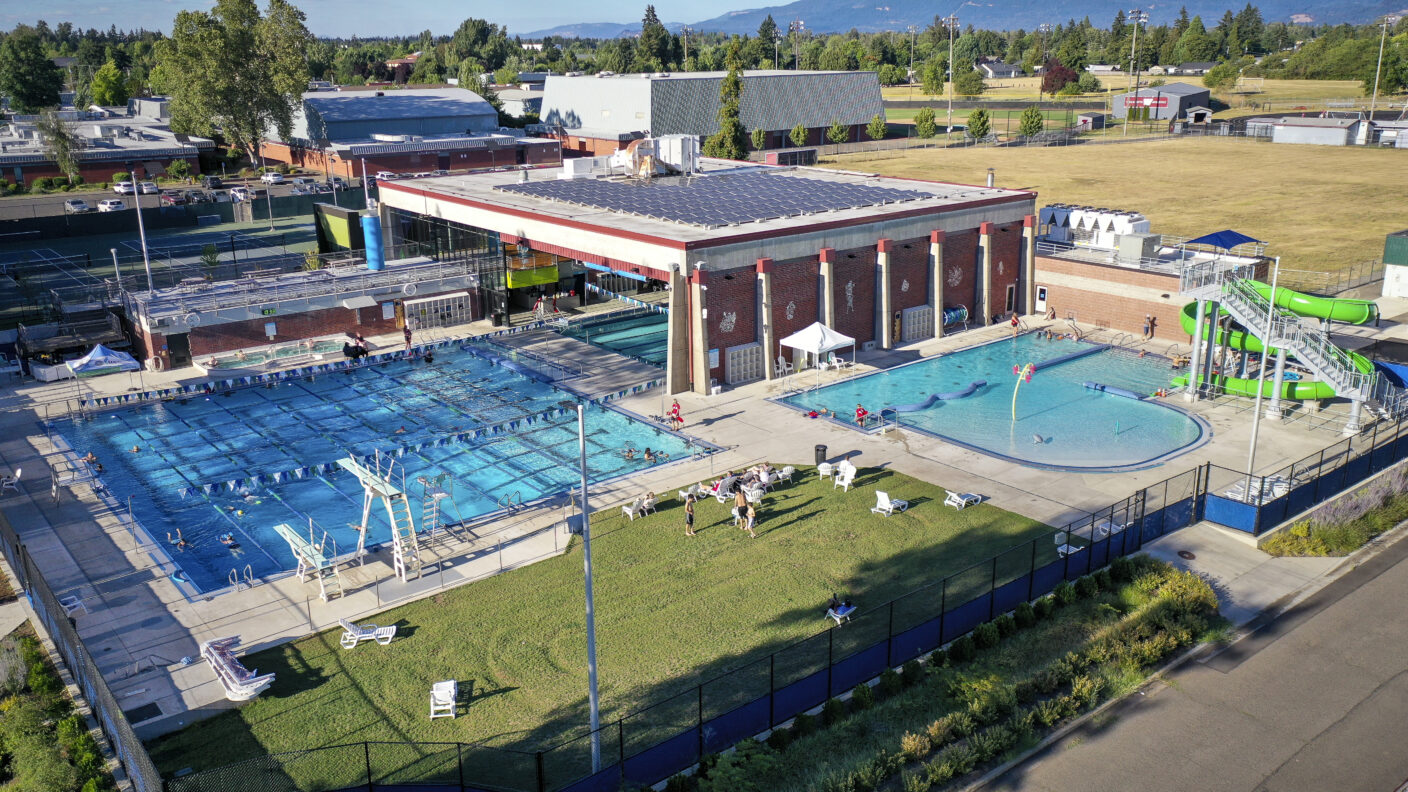
- $10.4 million
- Energy efficiency grant for CO2 reduction
- LEED Silver projection
City of Eugene Echo Hollow Pool Renovation and Expansion
Optimizing Aquatic Facilities
The Echo Hollow Pool renovation and expansion project came with a key goal from the City of Eugene to reduce fossil fuel consumption and greenhouse gas emissions, in alignment with the citywide Climate Recovery Ordinance aiming to reduce greenhouse gases 50% by 2030. Our expertise with natatorium retrofits helped us set the project team up for success.
We integrated a heat pump chiller to provide heating for the building and swimming pool, which in turn reduced overall energy use and greenhouse gas emissions. We also needed to balance existing systems within the building, a process that often brings to light past deficiencies. We addressed those shortcomings to deliver the owner a better functioning and more comfortable building.
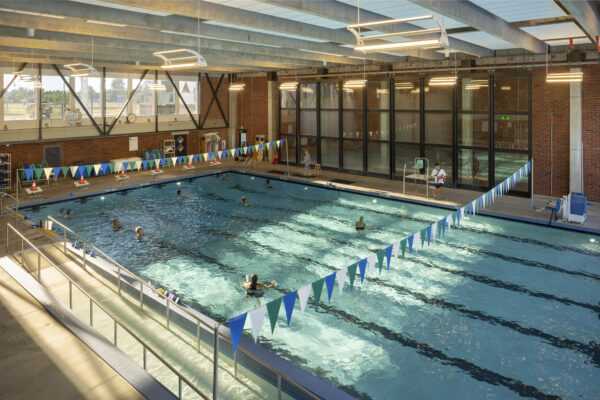
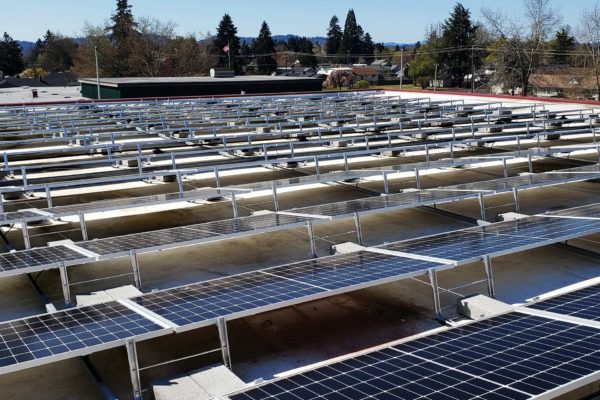
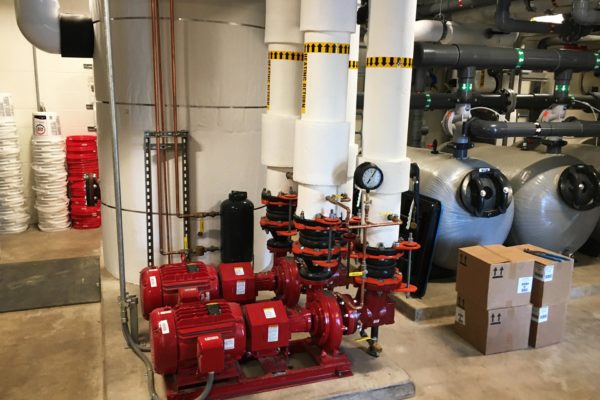
Navigating Retrofit Complexities
We worked closely with the architect and pool consultant to provide a functional and aesthetically pleasing design. Collaborating with the pool consultant was critical to substantiate the required heating for the pool and to incorporate the pool systems into the overall building automation system (BAS). Furthermore, the BAS required updating for more efficient systems operation and energy and utility tracking.
Reducing greenhouse gas emissions was a key factor in the design and selection of the building’s HVAC system — we accomplished this with a heat pump chiller. This added some complexity to the project, necessitating ongoing work with the commissioning agent to adjust and check control sequences to optimize operation and energy usage.
As with many retrofit applications, we uncovered some unforeseen issues during construction. The condition of the below-grade air distribution system required additional repair and replacement, which our team supported. The space constraints also resulted in some of our more creative duct and piping routing and equipment selection.
Also serving as the project’s energy analysts, we handled the energy modeling, night-flushing optimization, and advanced energy metering consulting service to help achieve LEED certification. We also worked with the MEP team to accurately model pool energy loads for simulations of CO2 reduction.
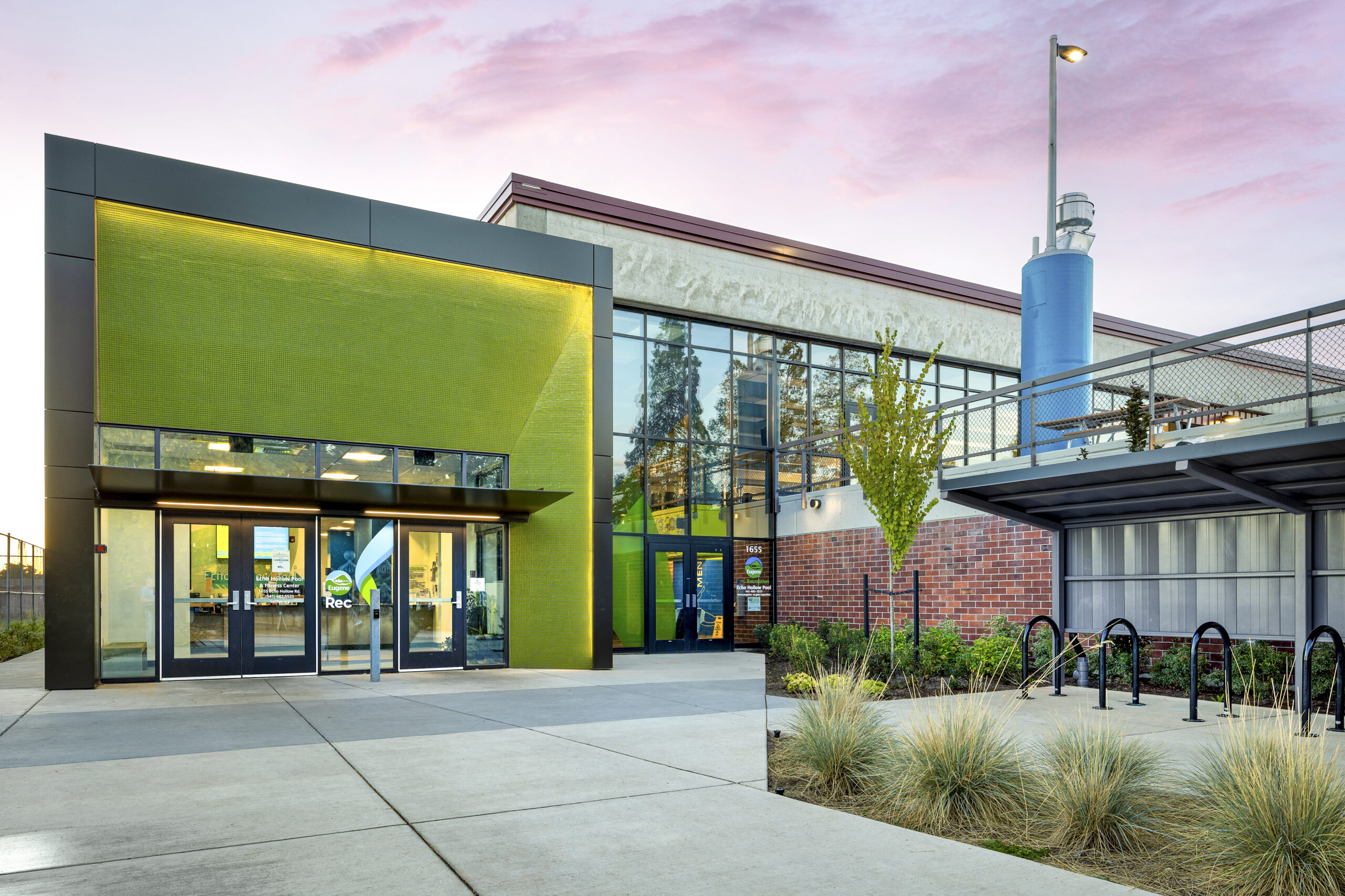
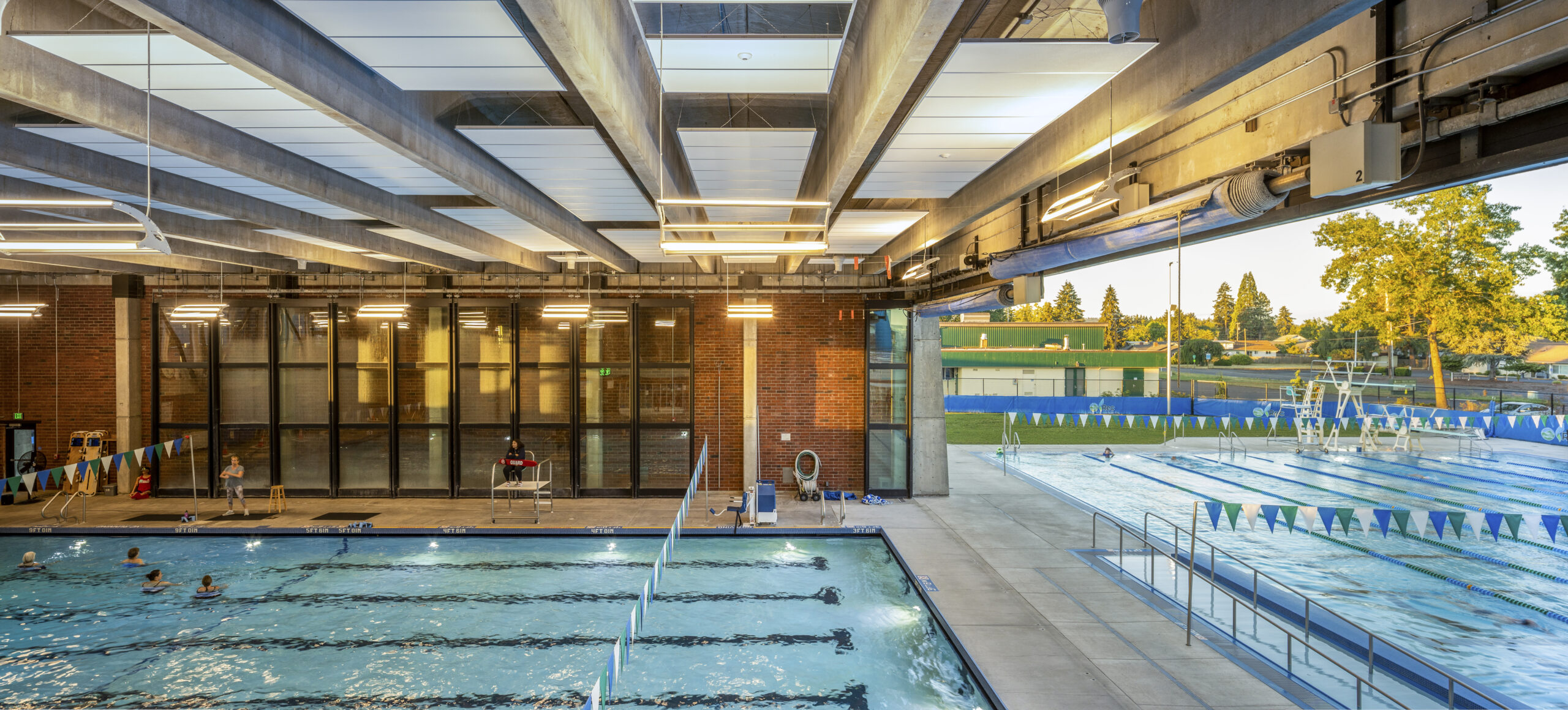
Creative Efficiency
The existing building conditions provided our team with great opportunities for innovative natatorium air circulation and ventilation — a primary feature of this facility is a retractable wall panel that is opened during summer months. We designed a network for ceiling fans to ensure deck air circulation when the wall is open that allows the natatorium air distribution systems to be shut off. We also added low wall exhaust inlets and demand-based outside air ventilation control to optimize ventilation effectiveness and limit over ventilation.
This project required us to address ongoing maintenance tasks and upgrades while aligning with the owner’s project requirements and construction budget. We enjoyed finding creative solutions, including reusing system components where feasible and integrating with existing systems. At project completion, we applied for an energy-efficiency grant for CO2 reduction.

Want to be a part of projects like this? Join Our Team.
